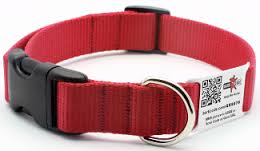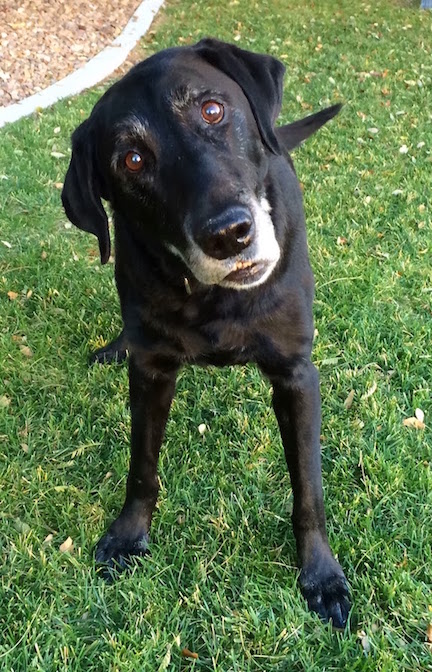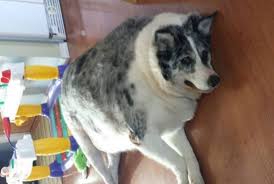Share Your Food With Your Dog
Rick Woodford, CHOW
 The "Dog Food Dude," Rick Woodford says you should share your food with your dog. But doesn't that go against everything we've been taught about proper nutrition? No, not if you're doing it right.
The "Dog Food Dude," Rick Woodford says you should share your food with your dog. But doesn't that go against everything we've been taught about proper nutrition? No, not if you're doing it right.
It seems like for years the experts have warned us about feeding our dogs from the table. That's because the food from your table usually included things like fatty meat and pizza.
Most people concentrate on the "list" of foods that you shouldn't give to your dog. Rick was tired of seeing those lists and decided to write a book about the good things that you can share with your dog.
The purpose of Rick's book, CHOW, is to help people know which foods you can share and easy ways to incorporate them.
Rick wants to get us to share more healthy foods in their natural form. He said its great to feed foods that are on the cutting board, not so much the food that is on our plates, before we add ingredients like salt, butter, or spices, things that aren't good for dogs. However, there are some beneficial fats and beneficial spices for dogs, like cumin, ginger and especially turmeric.
Rick goes back to why dogs picked humans in the first place. This is because we had food. They then started following us around, which began our relationship with dogs. He thinks that whether or not it is treats for training or providing a meal that your dog gets so excited over, it's also a bonding experience.
 CHOW is not meant to show you how to replace your dog's food, but a way to add something a little special to it that you can share. You will find over 100 different types of food items in the book, including everything from beef to chicken as well as fruits and vegetables, which provide antioxidants and can determine the fate of your dog's health.
CHOW is not meant to show you how to replace your dog's food, but a way to add something a little special to it that you can share. You will find over 100 different types of food items in the book, including everything from beef to chicken as well as fruits and vegetables, which provide antioxidants and can determine the fate of your dog's health.
Dogs get five basic antioxidants from supplemented commercial dog food, but Rick states that you can't depend on five to do everything that your dog's body needs. So it's okay to give your dog things like a few blueberries or a few blackberries every so often. You can also give them squashes, carrots, frozen green beans and even turnips.
But what about giving your dog healthy treats? Rick says a favorite of the dogs is actually Cheerios mixed with dried fish. The Cheerios will absorb the fish smell, which drives dogs crazy. Another treat is half of cup of plain popcorn, without any salt or butter. You can even ad a little cumin for an antioxidant boost. Again, these are just treats and should be given in moderation, and should be less than 10-percent of your dog's daily calorie intake.
But you don't have to worry about making sure your dog doesn't go over 10-percent with treats, as Rick has already figured that out in his recipes, for 10, 20, 40, 60, 80 and 100 pounds dogs.
CHOW shows you the benefits of more than 100 foods that can be simply added to the dog bowl or combined with a few other ingredients to make a quick meal loaded with real meat, healthy fats, and antioxidants. Each simple recipe is accompanied by information on the powerhouse of nutrients that work to keep your pet happy and healthy.
Visit Website
The Comeback of the Doghouse
Larry Hobbs, Bow Wow Dog Houses
 Ask most pet owners and they'll tell you their dog sleeps in bed with them. The days of the doghouse seem to have all but disappeared. But Larry Hobbs created a business making high-end eco-friendly doghouses.
Ask most pet owners and they'll tell you their dog sleeps in bed with them. The days of the doghouse seem to have all but disappeared. But Larry Hobbs created a business making high-end eco-friendly doghouses.
Larry Hobbs founded Bow Wow Dog Houses, a Los Angeles-based company that made custom-made eco-friendly doghouses. He started out as a manufacturer of industrial packaging products, primarily for wire and cable. This consisted of cable reels or more commonly known as spools.
When Larry got a dog, he went out in the market place to search for a doghouse and couldn't find anything he liked. He also couldn't find anything large enough. Most doghouses he came across were small and not large enough to accommodate his Blue Tick Hound puppy, which was going to eventually be around 80 pounds. Larry needed something his dog could get inside easily and be able to turn around.
Since Larry had the tools and materials, he decided to build his own in his shop. After building his first one, people with large dogs started asking Larry if he could build them one.
 Larry's doghouses weren't just boxes, they were designer doghouses. He used inspiration from pictures of homes for humans. He created a beach doghouse and even a red, white & blue one for Veteran's Day. He has also made a double one for two dogs. This gave them separate quarters side-by-side. This could be made with a door between the two or even a swinging door, allowing the dogs to be together. You could also customize your doghouse to match your own house.
Larry's doghouses weren't just boxes, they were designer doghouses. He used inspiration from pictures of homes for humans. He created a beach doghouse and even a red, white & blue one for Veteran's Day. He has also made a double one for two dogs. This gave them separate quarters side-by-side. This could be made with a door between the two or even a swinging door, allowing the dogs to be together. You could also customize your doghouse to match your own house.
A lot of the designs and features he built into his doghouses were for the dog's comfort. These included porches and windows, insulation, hardwood floor and vents. He sometimes even added a second door on the side to make it easier to clean.
Do people still use doghouses? Larry stated that many people bring their dogs in the house in the evening, but this gives them shelter outside during the day if it rains or gets cold. This may even protect them from the heat, as Larry's own dog went into his doghouse when it gets really hot outside.
Visit Website
3 Must Do Updates For Your Pet in January
Robert Semrow, Animal Radio Listomania
 It's that time of year where we change batteries and check flashlights, fire alarms and other important life saving tools. Here are 3 important potentially life saving tools that you should be checking on and updating for your pet's sake.
It's that time of year where we change batteries and check flashlights, fire alarms and other important life saving tools. Here are 3 important potentially life saving tools that you should be checking on and updating for your pet's sake.
#1 - Identification
One of the worst experiences a pet owner can have is a lost pet. Let's face it, our pets are part of the family, but sometimes they enjoy the call of the wild and can get loose. These days we have a variety of wonderful options to use to help us reunite with our pets from electronic tags and wearable technologies to microchipping and the simple, yet effective dog tags. None of this is any good if you haven't updated the information associated with this. So make sure you take the time to update the information and make sure that you know how it works as well. The worst time to have to figure out how it actually works is when you desperately need it to work.
 #2 - Food And Water Bowls
#2 - Food And Water Bowls
That's right, it's time to update and review those very important feeding and drinking tools. The National Sanitation Foundation (NSF) rated pet food bowls the 4th "germiest" place in the home, even over toilet bowls. No, don't use a toilet bowl as feeding or watering bowl. Do take a look at your water and feeding bowls and realize that keeping them clean and free of harmful bacteria is essential to your pet's health. There are multitudes of new bowls that are made from different materials to fight these problems all the way to daily disposable bowls that can assist with this issue. And while we are reviewing their bowls, take a look at your feeding bowl and ask yourself if it's too big? Why is this important, well, we pet parents have big hearts and when we see a bowl that we perceive to be less than full after we feed according to the recommended standards, we add more food cause it makes us feel better. This means each meal we are probably overfeeding our pets. That little bit of extra food adds up over a year and that leads to what we face now, an obesity epidemic for our pets.
 #3 - Upgrade And Update Their Collars And Leashes
#3 - Upgrade And Update Their Collars And Leashes
Take a look at your beloved's collars and leashes and see the effect that so much dirt, fun, wear and tear can have on it. It may be time to update or even upgrade you pet's collar or leash. Collars and leashes are another area of growth and change in the pet industry. From wearable tech that tracks exercise and movements to leashes that secure your pet and keep them safe from being stolen or lost, there are certainly some fine new options to consider for your best four legged friends.
We love our pets; we want them safe and sound. Check their identification information, update their collars and leashes and for their health and your health's sake, get some new bowls for their drinking water and food. Do you have another must have update, share it with us at our Animal Radio Facebook page and let's keep each other on track throughout the year.
Visit Website
 Dizzy Old Dogs - Diagnosing Idiopathic Vestibular Disease -Dr. Debbie
Dizzy Old Dogs - Diagnosing Idiopathic Vestibular Disease -Dr. Debbie
I came running when I heard the crashing paw steps of my 12 year old Labrador, Magnum as he flopped and tumbled in a nervous frenzy. With head crooked to the right, Magnum's dizzy, wobbly movements resembled a carnival lover's exit from the tilt-a-whirl ride. His eyes darted back in forth in an uncontrollable movement. Many might assume Magnum suffered a stroke, and figured it was time to put the old guy to sleep. But fortunately there was hope - Magnum developed a typical case of Idiopathic Vestibular Disease.
What is Idiopathic Vestibular Disease?
Idiopathic Vestibular Disease, also known as Old Dog Vestibular Disease, is a condition commonly diagnosed in senior dogs, but also seen in cats. The term idiopathic basically means the cause is unknown. This condition affects the vestibular system and the pet's sense of balance, typically with a rapid onset of symptoms. In Magnum's case he literally was fine at the start of a television program, and was wobbly just one hour later.
Symptoms of Old Dog Vestibular Syndrome include a wobbly gait, head tilt, anxiety, panting, and an abnormal eye movement called nystagmus, a condition in which the eyes dart rapidly back-and-forth or up-and-down. In addition to mobility problems, the topsy-turvy sensation leads to nausea, vomiting, and an inability to eat or drink. Thankfully my sturdy stomached Labrador barely missed a meal during his bout.
The cause of idiopathic vestibular vestibular syndrome isn't completely known, but fortunately most dogs recovery from symptoms within 2 to 4 weeks. In some cases dogs may suffer from future bouts months to years later. Some dogs may retain a slight head tilt or unsteadiness at times.
What Can Be Done?
A veterinary examination is important to identify suspected cases of vestibular disease. Other possible causes of these symptoms could include an infectious or inflammatory condition, inner ear infection, cancer, or a brain vascular episode - a stroke-like episode. In order to rule out these potential causes, more detailed testing is needed and may include tests like a CT, MRI, and CSF tap.
 There isn't a cure for a vestibular episode, and some pets recover without any treatment. But other animals require supportive care including anti-nausea medications, intravenous fluid therapy, hand feeding, and physical assistance to walk and protect from household hazards.
There isn't a cure for a vestibular episode, and some pets recover without any treatment. But other animals require supportive care including anti-nausea medications, intravenous fluid therapy, hand feeding, and physical assistance to walk and protect from household hazards.
Caring for a frightened, disoriented, wobbly, nauseated dog can be difficult. My 80 pound Labrador needed physical support to get up, walk outside and required hand feeding at times. He couldn't be left home alone without risk of injury. And because of all the hoisting, blocking collisions with furniture, and guiding away from the depths of the pool, I injured my back during his rehab time. The reality is that home care of a small or toy breed with vestibular disease is much easier than the physical demands of a assisting a large or giant breed dog.
Lessons Learned
I have seen many a patient come to my veterinary office for euthanasia after developing similar vestibular symptoms. Some pet owners assume that the severe symptoms and rapid onset mean that there is no hope and euthanasia is the only choice. I'll admit that vestibular symptoms are scary and affected pets are tough to care for at home, but if given the tincture of time, many senior dogs will eventually improve. Perhaps Magnum's story will help other pet owner's opt to pursue treatment or testing, and give time a chance to heal.
Four weeks later and Magnum was back to playing with toys and energetically bounding on walks. He still retained a slight head tilt to the right, his badge of courage as I see it. I'm thankful for his recovery and adore his charming, lovable tilted perspective of the world.
Featured veterinarian known as "Dr. Debbie" on national pet radio program, Animal Radio. Ebook author of "Yorkshire Terriers: How to Be Your Dog's Best Friend"; "Pugs: How to Be Your Dog's Best Friend"; "Mini Schnauzers: How to Be Your Dog's Best Friend"; and "Shih Tzu: How to Be Your Dog's Best Friend." Dr. Debbie's books.
Visit Website
The Dogfather's Grooming Tip with Joey Villani
 Removing Stains From a White Dog
Removing Stains From a White Dog
If you have a white dog, you've probably dealt with staining. You might have tried many different products and still were not able to remove the stains.
Staining of a dog's white coat is due to many things, depending upon where the stain is. The most common place is staining around the eyes, which is usually a bacteria or yeast. Staining is also common around the stomach area and paws, because they chew and lick those areas, and their saliva is what stains it. Staining can also be caused by diet or even food allergies.
An easy way to clear up the staining is to take a tablespoon of apple cider vinegar and add it to your dog's water daily. Low pH levels in a dog's body cause staining and bacteria. Our dogs need to be alkalined and you can do this by adding apple cider vinegar to their diet. People have seen tremendous results by doing this.
If the cider isn't working for you, you can try bluing shampoos. Bluing shampoos are more of an optical illusion. Blue naturally makes white look whiter, so you're not actually getting rid of the problem; you're just masking it.
There are also enzymatic and clarifying shampoos. Enzymatic shampoos work very well. The only thing with both of these products is that they are pretty harsh.
Another way to remove stains is by making a mixture at home. Take equal parts of unflavored Milk of Magnesia and Hydrogen Peroxide (10-20%) and mix it with a little bit of cornstarch. Apply it to the stained areas, which will then draw out the color. When you are done, just shampoo your pet.
Don't ever try true bleaching shampoos and pastes, as they can be very dangerous and should be left to the professionals.
 Animal Radio News - Lori Brooks
Animal Radio News - Lori Brooks
UK's Dogs Must Be Microchipped
All dogs in England, Scotland & Wales have to be microchipped with their owners' details registered and kept up to date in huge database to encourage "responsible pet ownership." It's hoped that compulsory microchipping will help reduce the number of lost and abandoned dogs and it allow authorities to directly identify dog owners and hold them accountable for their dogs' behavior and welfare.
Charm School For Wayward Cats
Should you ever need the service, there is Kitty Bungalow Charm School for Wayward Cats in Los Angeles. They take special care in socializing feral kittens and placing newly socialized lap cats into life-long loving homes. This unique group says it's mission is to provide all cats able to adjust to indoor life with a warm and loving forever home, while providing those cats who need to continue living outdoors with a caring colony manager, assuring all cats a humane and happy existence.
 Dog Loses 100 Pounds
Dog Loses 100 Pounds
At the beginning of a new year, everyone makes a resolution to lose weight. Well, Buddy the dog had a jump on all of us after losing more than 100 pounds. Buddy's new life began when his previous elderly owners could no longer care for him and they surrendered the 180 pound, morbidly obese Australian Shepherd to Hull's Haven Border Collie Rescue in Canada. It was a long 9-month journey of dieting and easing into exercise, along with cucumber and tomatoes for treats. After all of the effort, Buddy weighed 71 pounds!!! Buddy lost so much weight, that like humans, he underwent skin removal surgery so he could be more comfortable being active again. Buddy was also monitored by his doctor with weekly weigh-ins.
NY First State to Ban De-Clawing
New York was the first state to make it illegal to declaw a cat in 2019. The Manhattan assemblywoman, Linda Rosenthal, introduced the bill to ban the controversial procedure sometimes called de-knuckling because it's actually the entire knuckle, which is the last bone in the cat's toe, which is removed. The proposal to ban declawing in New York ignited an intense debate. While most veterinarians say declawing should be a last resort, the New York State Veterinary Medical Society argued that cat owners have a right to decide what's best for their cats. The New York declawing bill bans the procedure unless it is done to remove a tumor or for other medical reasons. Declawing or de-knuckling of cats is already banned in many countries, including Australia, India, Spain and the United Kingdom. Maryland was the second state to do so in 2022, while Washington D.C. was the latest to ban it in 2023. Michigan is currently putting the law into effect.
 Cat Reacts To Seeing Dog Again
Cat Reacts To Seeing Dog Again
We all know what it's like when our friends or family members go away on long trips and leave us behind. It's a major bummer and we wait patiently for that day when they return home. But you know what they say, absence makes the heart grows fonder, and that's exactly how Jasper the cat reacted to seeing his dog friend Bow-Z after 10 days of being apart. The black cat just couldn't contain his excitement as he jumped up and threw his paws around the dog and buried his face in the dog's neck. Bow-Z's tail wags and the dog allows his feline friend to hug him for a few minutes before trying to back away and get some breathing room. But Jasper just wasn't ready to let his best friend go. The cat let out a couple of excited meows and then clung to the dog with all his might. Eventually the big dog just gave in and enjoyed the love.
Puppy Cloned from Deceased Dog's DNA
A couple in England received a cloned replica of their beloved pooch. The puppy, named Chance was created from the DNA of a dog who had been deceased for nearly two weeks. Previously cloned dogs were created with samples taken from living, or very recently deceased, dogs. It's the first time the procedure, which costs $100,000,succeeded with a sample from a dog who had passed on 12 days earlier. Interestingly, a second dog was pregnant with another cloned puppy and they couple planned to keep both puppies and adopt their surrogate mothers as well.
 Listen to the entire Podcast of this show (#1258)
Listen to the entire Podcast of this show (#1258)





